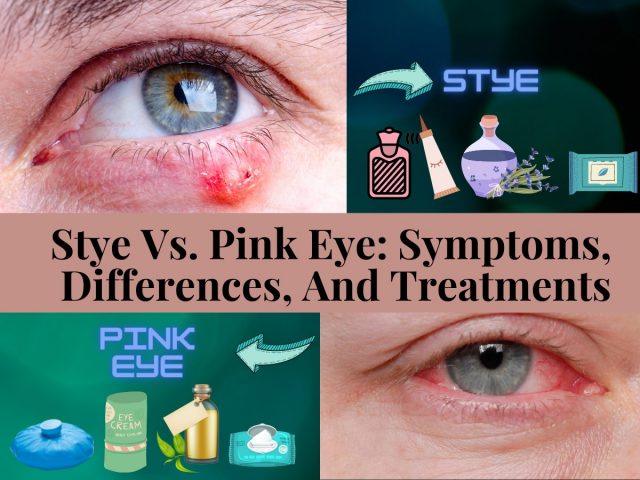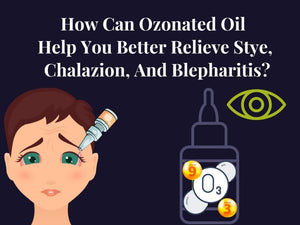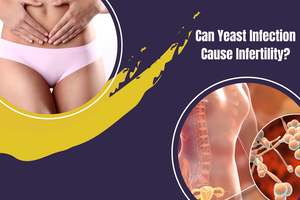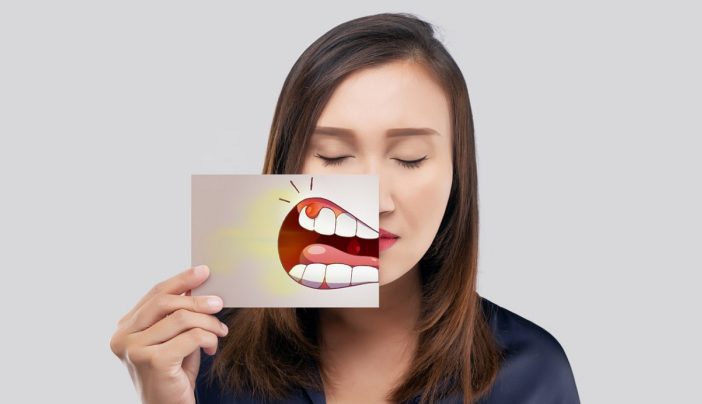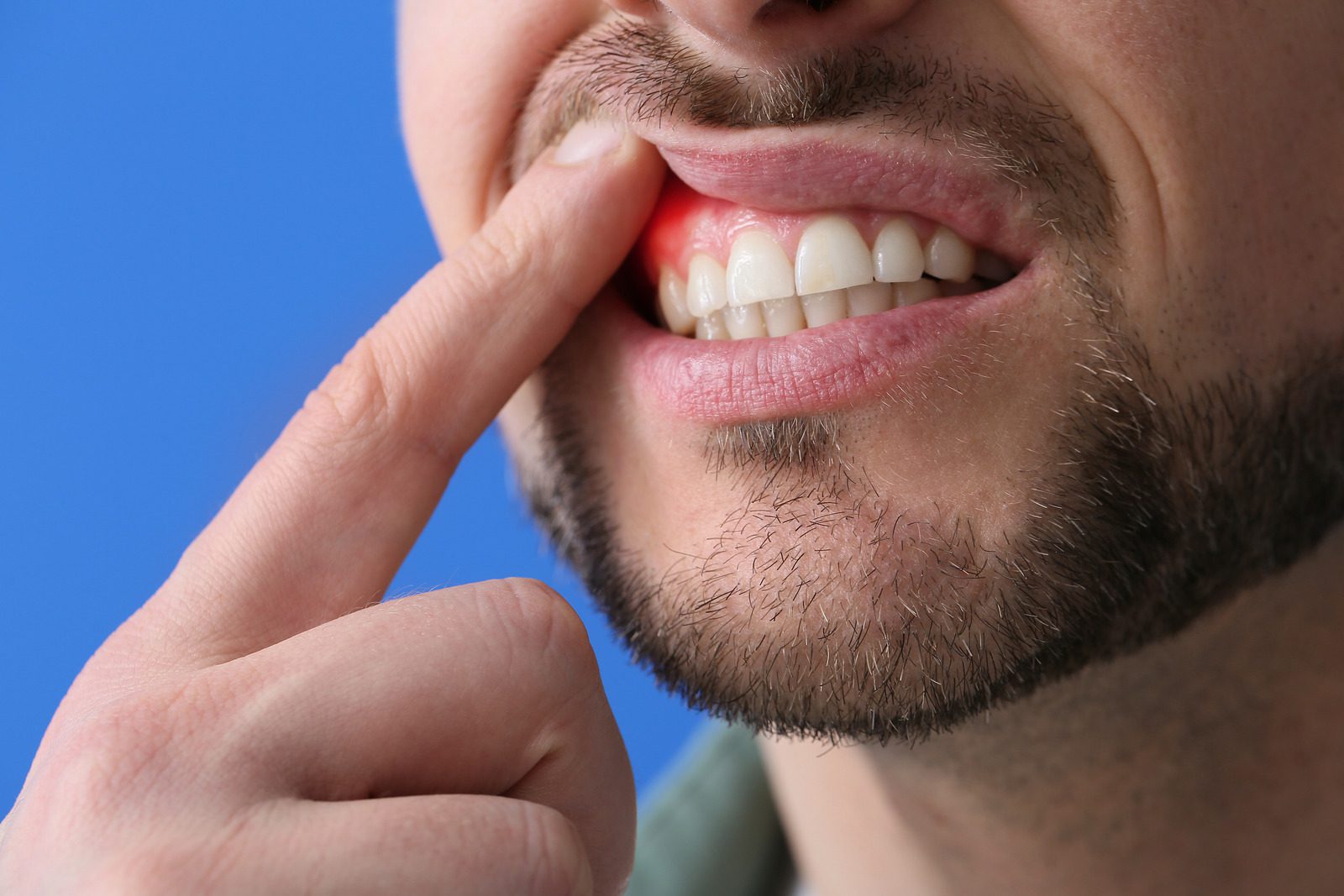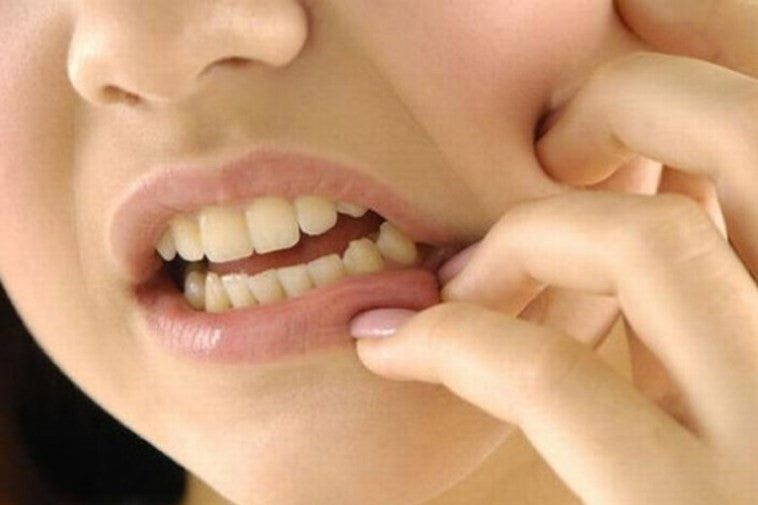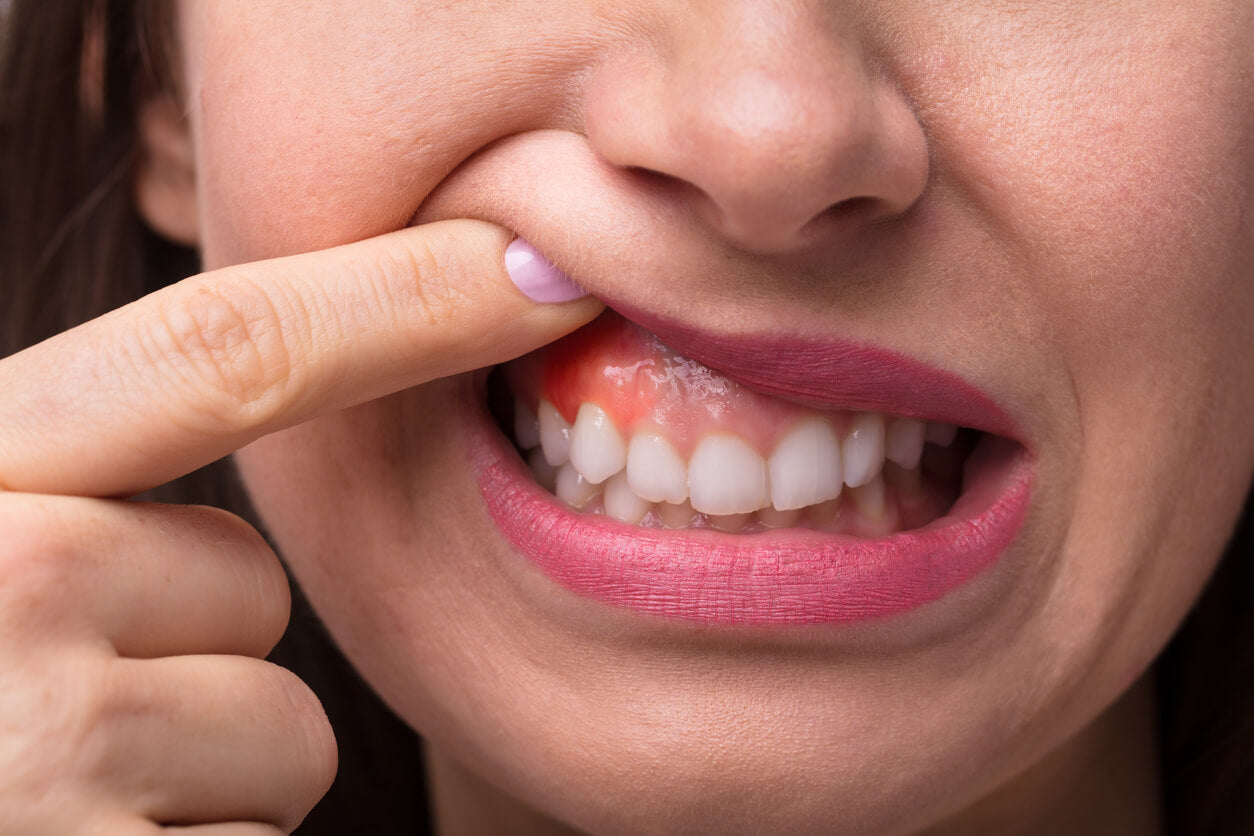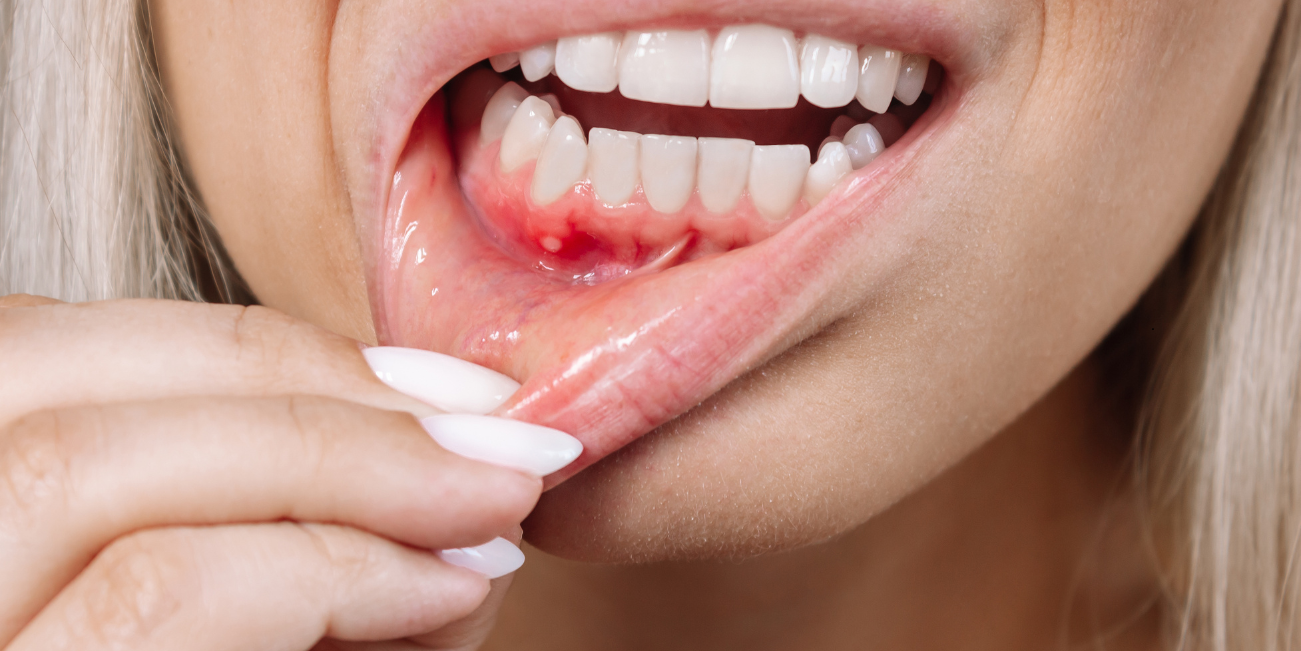The eyes are delicate organs in the human body that enable us to observe the World’s beauty, keep away invaders, and produce tears. Naturally, the ocular parts, e.g., eyelids and eyelashes, protect our eyes from dust, allergens, insects, and microbes. The tear formation filters all invaders and keeps the inner eye moistened and clean. However, our eyes may suffer from various ailments due to several unfavorable conditions and causes. The most common eye problems, excluding sight-related issues, are dry eye, styes, chalazion, blepharitis, and pink eye.

In most cases, these eye problems are often confused due to their similar signs and symptoms. It is difficult for laypeople to diagnose and distinguish stye vs. pink eye. Both conditions call for proper medical care since they are distinct illnesses with distinct causes. The following explains stye vs. pink eye, its symptoms, causes, and management.
Significant Difference Between Stye Eye And Pink Eye:
| Common name | Stye or Sty | Pink Eye |
| Medical name | Hordeolum | Conjunctivitis |
| Definition | Painful, swollen red bump, lump, boil, or pimple appearing in oil glands located on the edge of eyelid both upper and lower eyelid may affect. | Inflammation of the conjunctiva due to allergens or viral or bacterial infection causing redness, swelling, and itchiness. |
| Types | Internal hordeolumExternal hordeolum | Bacterial conjunctivitisViral conjunctivitisAllergic conjunctivitis |
| Signs | Swollen lump or boil that may contain pusAffecting oil or meibomian glands | No lump or boilAffecting conjunctiva |
| Symptoms | Localized swelling in the lump area with pain. | Generalized swelling of the conjunctiva or eyelid in case of keratitis with itchiness. |
| Common Causes and Risk Factors | Staphylococcal infection in the meibomian/oil glands.Risk increases with unhygienic conditions | Allergens or ChemicalsViral or bacterial infectionForeign hard or sharp objects fallen in the eyeBlocked tear duct in newbornsRisk increases with sensitivity to allergens and ocular accouterments. |
| Diagnosis | Only requires physical examination | Physical examination and culture analysis of eye fluid |
| Prevention | Preventive measures include maintaining hygiene, taking care with cosmetic use, and avoiding wearing the lens. | Preventions are similar to stye. |
| Treatment | Antibiotics and painkillers | Symptomatic treatment with decongestants, anti-inflammatory medicines, and painkillers. Antiviral medication in case of herpes simplex viral conjuntivitis. |
| Surgery | Stye surgery is the last solution when all other remedies fail. | Since the condition is self-limiting, surgery is unnecessary; however, in severe cases involving the cornea, keratoplasty or a superficial keratectomy may be used to treat the condition. |
| Home Remedies | Warm compressEucalyptus oilLavender oilCastor oilLemon oil | Cold compressTea tree oilLavender oilRoman chamomile hydrolatNeem oil |
| Recovery Period | 2-5 days | Bacterial conjunctivitis requires 2-7 days to healViral pink eye may take 2-3 weeks |
| Recurrence | Usually uncommon to occur againCommon in case of chronic blepharitis | Rare to come backMay occur upon allergen exposure |
Stye Eye:
A stye or hordeolum (sty) is a red, uncomfortable bump that may resemble a boil or a pustule and is located close to the margin of the eyelid. Pus is frequently present in styes that look like a pimple or a pustule. The inner portion of the eyelid might occasionally develop styes, which often grow on the exterior of the eyelid. A stye would typically go away on its own within a few days. Following the warm compress, you might alleviate the irritation or discomfort that comes with a stye. Moreover, diabetes mellitus and compromised immune systems increase an individual\’s likelihood of developing styes.
Clinical Manifestation
Clinical manifestation includes the signs, which are physicians’ observations made upon examination, and symptoms which are patient complaints.
Signs
- Lump with pus
- Swelling
- Redness
- Excessive tear formation
Symptoms
- Pain and irritation
- Eye tenderness
- Difficulty opening and closing eyes
- Blurred vision in case of large stye or multiple styes
- Excessive eye discharge or watery eyes
- A gritty feeling inside the eye
- Light sensitivity
Similar Condition Not To Confused With
A similar condition to stye is chalazion characterized by inflammation of eyelids. A chalazion develops due to the blockade of at least one of the several oil glands marginal to the eyelid. Nevertheless, a chalazion, unlike a stye, is typically not painful and is most noticeable on the inner lining of the eyelid. Both ailments are treated similarly.
When To See An Ophthalmologist
Usually, styes go on their own and are not harmful. You can treat them at home by applying a warm compress using a clean and sterile cloth. Use a clean wipe to drain the pus and take over-the-counter medicines to alleviate swelling and pain. Nevertheless, in rare cases, styes can be problematic and affect daily routine. Therefore, you can speak with an eye specialist or ophthalmologist if;
- A stye is too enlarged to open the eye or affects vision.
- The inflammation extends to the entire eyelid, cheeks, or nose.
- Stye doesn’t heal in 2-3 days with warm compress and OTCs.
Types Of Stye
There are two types of styes based on their location and the oil gland affected.
Internal Hordeolum
Most styes begin forming inside the meibomian gland, one of the eye’s oil glands, located in the inner layer of the eyelid. These are more painful than external styes since the growing lump exerts pressure outwards to the eye. Moreover, internal hordeolum usually does not affect the ability of the eye to open and close and does not interfere with sight.
External Hordeolum
External hordeolum or sty grows due to infection in the oil glands opening into the eyelash follicles, i.e., ‘glands of Zeis’and ‘glands of Moll.’ These are more common than internal styes. Moreover, enlarged external styes can interfere with eye-opening ad closing or may shadow the lens affecting vision.
Causes Of Stye Eye
The common cause of all styes is bacteria, particularly Staphylococcus species that live harmlessly on human skin. Nevertheless, bacteria and dirt can accumulate in oil glands and eyelash follicles due to improper eye care, poor hygiene, and rubbing eyes with dirty hands. Such accumulation in a favourable environment favours bacterial proliferation and infection that develop as inflamed pus-filled lumps.
Risk Factors
Though the common cause of hordeolum is Staphylococcal bacteria, its risk factors vary with the possibilities of bacterial transfer to the eyes. These are
- Touching eyes with filthy hands, mainly when not washing hands after using the toilet
- Using expired cosmetics or ocular accouterments
- Leaving the eye make-up on overnight
- Using contact lenses without disinfecting or taking proper hygienic measures
- Suffering from a chronic inflammatory eye disease called blepharitis. Styes are common in people with blepharitis.
- Suffering from hay fever or seasonal allergy
- Having a chronic inflammatory malady like rosacea or seborrheic dermatitis
- Dysfunctional meibomian gland
- Medical conditions like diabetes mellitus
Diagnosis
Diagnosis of stye is straightforward, requiring a physician to examine the patient eye thoroughly by flipping the eyelids. The examination may need a magnifying glass or light. Moreover, it does not require any test or culture analysis.
Management
Management of stye includes patient care, lifestyle and dietary changes, home remedies, and treatment with medicines or operations.
Preventions And Lifestyle Changes:
Hand Washing
Use a mild soap with no irritants to wash your hands regularly and several times daily. You can also use alcoholic hand sanitizers when out or without tap water.
Do Not Touch Your Eyes
It’s better not to touch them; you can splash fresh water with your properly washed hands if something falls in.
Use Clean Lenses
Always use clean contact lenses. Disinfect them with a clear lens solution or as directed by the ophthalmologist. Moreover, wash hands before ad after application.
Caution With Cosmetics
Do not use expired cosmetics, particularly on your eyes or those irritating upon application. Also, remove your makeup before going to bed, or else it will clog the oil glands of your eyes, increasing the risk of stye.
Do Not Try To Pop A Stye
Do not squeeze the stye even if you see the pus and urge to drain it. Popping styes can spread the infection or may infect the conjunctiva.
Massaging
Seek a professional for massaging the eye area or practice it yourself to help drain the stye. Massage in a circular pattern while applying mild pressure. Moreover, ensure that you have properly washed your hands.
Home Remedies
Warm Compress
A primary remedy at home is to take a clean and soft cloth, dip it in warm water, wring, and placing on your stye with mild pressure. A warm compress helps unclog oil glands on the edge of eyelids, tenders the crust that develops on most styes, and eases drainage. Also, ensure that the water is not too hot to burn your skin. Moreover, apply a warm compress three to four times daily for about fifteen minutes, as recommended by several ophthalmologists.
Green Teabag Compress
Green Tea contains tannic acid, an excellent anti-inflammatory agent. Take two green tea bags of a high-end label with no flavors. Steep them in boiling water for two minutes. Remove the bags and allow them to cool down to the touch. Lastly, apply a warm compress with teabags for about five to ten minutes. You can use this home remedy once daily if prone to styes.
Guava Leaves
Guava leaves are famous for their anti-microbial and anti-inflammatory properties. It can heal pain and swelling associated with styes. So take a few guava leaves and boil them in water for about five minutes. Remove the leaves and use water to apply a warm compress once cooled down to the touch. Moreover, application twice daily for ten minutes is safe and effective.
Turmeric
Turmeric powder is the best anti-inflammatory agent. Though applying it straight to the eye can be irritating and itching, you can use organic antiseptic creams with turmeric recommended by the physician.
Corriander Seeds
Some researchers suggest coriander seeds good for styes because of their anti-inflammatory properties. Boil some seeds in water for 5 minutes and use the water to apply a warm compress. Consult with your ophthalmologist before any home remedy.
Bitter Guard
Bitter guard is an anti-bacterial agent that can help with styes. You can use them directly but cutting out the slices and putting them on the eye for about five minutes. Moreover, you can boil a few slices in water and use them as a warm compress.
Treatment
Mostly, styes go on their own in about 2-3 days. Nevertheless, if the infection spreads to the eyelids or styes won’t heal even after a warm compress, use medication as directed by the physician.

Medicines
Since the only cause of the stye is a bacterial infection, it can only be treated with antibiotics.
Antibiotics
Topical antibiotics in the form of eye drops, gels, creams, ointments, and sprays can heal the mild infection. However, moderate to severe infection requires oral antibiotics. Complete the course of the oral antibiotic for about seven days to prevent recurrent infection.
Effective oral antibiotics include;
- Amoxicillin
- Erythromycin
- Cephalosporin
- Doxycycline
- Tetracycline
Saline Lid Wash
Most ophthalmologists recommend using over-the-counter saline lid washes. For example, hypochlorous acid saline lid wash is used to manage internal styes. Small styes can be treated with baby shampoos mixed in saline or fresh water.
Surgery
If a stye didn’t heal or drain after several attempts of a warm compress or medication use, your doctor might recommend a minor surgery. This surgical procedure involves incision and draining the pus after anesthetizing the localized eyelid area. The extraction is also tested and observed under a microscope to rule out sebaceous carcinoma, a rare yet curable cancer.
The Bottom Line
A stye is a typically diagnosed eye infection characterized by lump formation marginal to the eyelid. Typically, the pus-filled bump may last for just a few days; no more than three, and you may not require therapy. Moreover, symptoms may be relieved with home remedies, hygiene, and care.
A stye can occur to anyone. While you can\’t always avoid it, maintaining proper cleanliness, particularly surrounding the eye area, can help lower your risk of developing a stye. Although styes are not contagious, they can disseminate to other eyes or areas surrounding the infected eye. Nevertheless, if it doesn’t heal, visit an ophthalmologist near your area, take antibiotics as recommended, complete the course, and take follow-up to ensure the eyelid glands are completely unclogged.
Pink Eye
Pink eye is a common name for ‘Conjunctivitis,’ an infection or inflammation of the conjunctiva. Conjunctiva is the membrane that covers the white part of the eye, protects the lens, and inner eye parts, filters air, traps debris and helps tears flow. An extensive network of blood vessels forms a reticular pattern in the conjunctiva. Inflammation of these vessels due to infection or allergy makes eyes appear pink or red; that\’s why the condition is commonly referred to as pink eye.
The infection may be the result of a viral or bacterial attack. In some individuals, allergic reactions to any particular allergen exposed to the eye can also cause pink eye. Moreover, in newborns, pink eye is commonly caused due to blockade of the tear duct. Pain, swelling, and irritation associated with the illness may affect daily routine. Symptomatic treatment following early diagnosis is essential to limit the spread of infection to other eye areas or individuals since it is highly contagious upon touch.
Clinical Manifestation
Knowing the signs and symptoms of pink eye is crucial to ruling out other similar eye conditions. After diagnosing pink eye, knowing the type of conjunctivitis is crucial so that the proper treatment can be prescribed.
Signs
- Redness of the conjunctiva
- Inflammed blood vessels
- Excessive tearing
- Eye discharge in one or both eyes
Symptoms
- Reddened or pink-toned eyes
- Pain
- Irritation
- Swelling
- Abnormal tearing
- Excessive eye discharge
- Eye discharge forming crust overnight
- A gritty feeling in the eye
When To See An Ophthalmologist
Several eye conditions are characterized by inflammation of blood vessels and pink-toned conjunctiva with excessive eye discharge and tearing. Common conditions like when something sharp falls into the eye or hay fever may also result in swollen red eyes, blurred vision, or photosensitivity. Therefore, it is essential to seek medical assistance for proper diagnosis and treatment. Moreover, if you observe the following signs, see an ophthalmologist.
- Blurred vision
- Yellowish or greenish pus
- Opaque cornea rather than clear
- Infection occurs in a patient below five years
Types Of Pink Eye
Bacterial Conjunctivitis
Bacterial pink eye commonly occurs due to an infection caused by Staphylococcus aureus, Hemophilus influenzae, Streptococcus pneumoniae, Moraxella catarrhalis, and less commonly, Neisseria gonorrhoeae, and Chlymadia trichomatis. Staphylococcal species generally live on human skin, but touching the conjunctiva with dirty, unwashed hands can spread the bacteria.
Furthermore, contact with an infected individual or using someone’s cosmetics or eye accouterments, e.g., contact lenses, can also cause pink eye. The condition is quite painful due to inflammation of the conjunctiva and gives a gritty feeling in the eye with abnormal tear formation. It is often accompanied by sore throat or cold-like symptoms. Culture analysis can confirm a bacterial infection which suggests antibiotic treatment.
Viral Conjunctivitis
Viral conjunctivitis may be caused by adenovirus, coronavirus, herpes simplex virus, and varicella-zoster virus. Typically, viral pink eye occurs in individuals with a respiratory infection, viral colds, and chronic coughs. The infection can occur when an infected person coughs and touches their eyes with dirty hands. People may also develop it when they blow their nose too hard, resulting in mucus reaching their eyes. Since it is contagious, it may be spread by other individuals sneezing and coughing in close vicinity.
Allergic Conjunctivitis
Seasonal allergies to particular allergens, e.g., pollens, animal dander, or fur, can cause allergic pink eye. Each individual is sensitive to a particular allergen that can trigger the hypersensitivity reaction. Exposure to allergens (antigens) initiates the release of IgE antibodies that causes mast cells to release histamine and other inflammatory agents to fight the antigen.
Consequently, the release and action of inflammatory mediators produce symptoms like itching, tearing, swelling, watery eyes, sneezing, and watery nasal secretions. Symptomatic treatment and prevention of exposure to allergens can mitigate the condition. In addition to allergens, contact lenses, when worn for long without proper hygienic measures, can also cause allergic pink eye, known as giant papillary conjunctivitis.
Chemical Conjunctivitis
Exposure to chemicals like chlorine in water typically causes pink eye. Nevertheless, excessive air pollution or air loaded with smoke or chemical fumes can also result in inflammation of the conjunctiva.
Causes Of Pink Eye
- Viruses (adenovirus, coronavirus, herpes simplex virus, and varicella-zoster virus)
- Bacteria (Staphylococcus aureus, Hemophilus influenzae, Streptococcus pneumoniae, Moraxella catarrhalis, and less commonly Neisseria gonorrhoeae)
- Chemicals (chlorine and other chemicals in air and water )
- Allergens (pollens, animal dander, less commonly synthetic fibers)
- Blocked tear duct (in newborns)
- Foreign objects fell into the eye (accidental cause)
Risk Factors
- Everyone is equally susceptible to the pink eye; nevertheless, children are at more risk of developing such an infection due to a lack of practicing suitable hygienic measures in school or on playgrounds.
- People who share their cosmetics and eye accouterments like contact lenses or artificial eyelashes.
- People who suffer from hay fever or seasonal allergies.
- People with respiratory infections and a habit of blowing their nose hard.
- People who frequently go swimming in pools or are exposed to air pollution.
- People who are suffering from other viral or bacterial infections.
- Infants or newborns with blocked tear ducts
Diagnosis
It\’s not so challenging for an ophthalmologist to diagnose pink eye by enlisting the signs he observes and symptoms filed by the patient. Moreover, health care providers also investigate and inquire about the history of allergies to know if the seasonal allergy is causing pink eye. However, it requires further examination to rule out bacterial, viral, or chemical pink eye.
- External eye examination using magnifying glass and light
- Inner eye examination to check the dissemination of infection
- Vision test to check if the sight is affected by pink eye
- Eye discharge culture analysis to diagnose bacterial or viral infection
- Conjunctival tissue smear; performed in case of chronic conjunctivitis or when no therapy is effective.
Management
Patient care, food and lifestyle modifications, home cures, medication, or surgical therapy are all part of the management of pink eye.
Prevention And Lifestyle Changes
- Washing hands and avoid touching eyes for no reason
- Wash hands, sanitize, or practice proper hygiene before application of contact lenses
- Do not share your cosmetics or ocular accouterments.
- Wash bedsheets, pillowcases, towels, and scarves regularly.
- Throw away expired cosmetics or eye drops
- Wear goggles while swimming
- Wear shades in places with excessive air pollution and smoke
- Limit exposure to allergens
- Manage bacterial and viral infections
- According to the CDC, pink eye is curable only once therapy has begun. The CDC advises keeping children at home where close interaction with the other children cannot be avoided.
Home Remedies
Cold Compress
A cold compress can help with inflammation and thus can mitigate the symptoms of pink eye. Take a bowl and fill it will with chilled water. Use a clean, washed cloth and soak it in cold water, wring it, and applying it to the eyes for about 10-15 minutes. You can do this home remedy about three to four times daily to help reduce swelling and redness. Moreover, a cold compress is the best natural treatment for allergic pink eye.
Rose Water
You can also use natural rose water to help with the symptoms of conjunctivitis. To increase the effectiveness of rose water, refrigerate it. Using an eye drop bottle to instill drops of rose water is the quickest and easiest method. Moreover, use thrice daily for the best results.
Saline Solution
You can use saline solution to rinse the eye and remove bacteria and viruses naturally as much as possible. Nevertheless, antibiotics are effective in bacterial pink eye.
Cucumber Slices
Cucumber slices are also known to heal eye irritations and inflammation. Take two cucumber slices and let them cool in a refrigerator or chilled water bowl. Place them directly on the eyes for about ten minutes. Rember that this home remedy can only alleviate the symptoms of pink eye.
Black Tea Bags
Black tea naturally has antibacterial, anti-inflammatory, and analgesic properties. You can apply a warm compress from brewed black tea bags to conjunctivitis-affected eyes. Place the bags for about 10 minutes twice or thrice daily to heal the inflammation. Moreover, some studies suggest that this remedy can increase antibiotic effectiveness and shorten therapy duration.
Chamomile Tea Bag Compress
Though there is limited scientific evidence to support the use of several tea bags in healing pink eye, traditional medicine has historically relied heavily on natural remedies. Like black tea and calendula, brewed chamomile tea bags can alleviate inflammation. Place them on the eye like a warm compress for about five to ten minutes. You can also use cold tea bags rather than warm ones.
Zinc Supplements
Many studies support using several vitamins and minerals in preventing and helping with viral pink eye. Though there\’s limited knowledge about the underline mechanism of action, zinc, due to its ability to boost immunity, is preferred in infectious conjunctivitis. Moreover, the daily safe recommended dose is 30 to 50 mg daily.
Treatment
Different types of the pink eye require different treatments.

Medicines
Bacterial Pink Eye Therapy
The bacterial pink eye requires antibiotics to kill and control bacterial infection. These antibiotics are available in several dosage forms, like creams, eye ointments, drops, tablets, and capsules. Usually, adults can take oral and topical antibiotics; however, the preferred form for children are eye drops and ointments. The best antibiotics for acute bacterial pink eye are
- Floroquinolones
- Aminoglycosides
- Macrolides
Other medications include bacitracin ointment, fusidic acid, and povidone-iodine. Moreover, complete the antibiotic curse for seven days even after the symptoms heal in two to three days.
Viral Pink Eye Therapy
Viral pink eye is typically caused by viruses that cause common colds. You cannot treat the condition with antibiotics since they can only kill bacteria, not viruses. Due to the specificity and lack of viral tests, antiviral therapy is not usually recommended. Moreover, symptomatic treatment and warm or cold compress can alleviate the symptoms in seven to ten days.
Allergic Pink Eye Therapy
Antihistamines are the best and most effective therapy for allergic pink eye since these can inhibit the release of inflammatory mediators causing the symptoms. Loratidine and diphenhydramine are commonly used oral over-the-counter medications. You can also try antihistamines in the form of eye drops and sprays.
Chemical Pink Eye Therapy
Chemical pink eye is treated with symptomatic treatment. Firstly, rinse the eye with saline water. Then, try a warm or cold compress. If the condition doesn\’t improve, use topical steroids to alleviate pain and inflammation instantly.
Surgery
Due to the self-limiting nature of allergic conjunctivitis, major surgery might not be appropriate. It is, however, necessary to perform penetrating keratoplasty or superficial keratectomy in extreme circumstances due to corneal involvement.
The Takeaway
Conjunctivitis is an inflammation of the membrane covering the white part of the eye. It can be viral, bacterial, allergic, or chemical, though the symptoms are similar. However, each condition requires proper treatment to heal completely. In most cases, pink eye will clear on its own within one to two weeks. You can try home remedies before switching to medicines like warm or cold compresses incorporating different natural herbs.
Moreover, wait until the eye stops draining before returning to the workplace or school to prevent spreading the infection to others. If your eye produces a significant amount of mucus and pus, take bed rest for a week and avoid contact with other people. Once your doctor diagnoses the type of pink eye you have, follow the treatment and practice hygiene.


